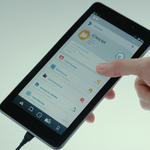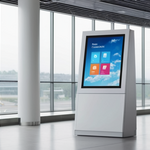
Windows 11 comes equipped with Microsoft Defender Antivirus, a comprehensive built-in security solution that provides real-time threat protection, malware detection, and network security features that together create a robust foundation for device protection. For the majority of general users who maintain basic cybersecurity practices, Windows Defender represents sufficient protection against common threats encountered during routine browsing, email communication, and media consumption. However, the comprehensive landscape of modern cyber threats—including advanced ransomware, zero-day exploits, phishing attacks, and sophisticated malware variants—presents a more nuanced question about whether Windows 11’s built-in protection alone adequately addresses all security scenarios, particularly for users handling sensitive data, operating businesses, or working in high-risk environments. This report provides an exhaustive analysis of Windows 11’s security capabilities, comparative assessments of third-party antivirus solutions, evaluation of current threat vectors, and practical frameworks for determining whether supplementary antivirus protection aligns with individual security requirements and risk tolerance.
Windows 11’s Integrated Security Architecture and Built-In Protection Mechanisms
Windows 11 represents a significant evolution in Microsoft’s approach to operating system security, introducing hardware-level protections alongside sophisticated software-based threat detection mechanisms. The foundation of Windows 11’s security posture centers on Microsoft Defender Antivirus, which has undergone substantial improvements over recent years and now operates as a next-generation protection suite providing real-time, always-on scanning that continuously monitors system activity for malicious threats. This real-time protection functions automatically in the background without requiring user intervention, actively scanning files and applications as they are accessed or executed to identify and neutralize threats before they can cause damage to the system.
Beyond the antivirus component, Windows 11 integrates multiple interconnected security features that work synergistically to create layered protection. Microsoft Defender SmartScreen operates within Microsoft Edge and other supported browsers to evaluate the reputation of websites, applications, and downloads against Microsoft’s extensive database of known malicious sites and files. When users attempt to access a potentially dangerous website or download a file flagged as suspicious, SmartScreen displays warning notifications that allow users to make informed decisions about whether to proceed. The Windows Firewall provides network-level protection by monitoring incoming and outgoing traffic, preventing unauthorized access attempts and blocking suspicious network activity that could indicate an active attack or data exfiltration attempt.
Windows 11 incorporates hardware-level security features that represent a fundamental departure from previous operating system architectures. The integration of Microsoft Pluton security processors on compatible devices provides an isolated security environment running independently from the main operating system, where sensitive security functions can execute with enhanced protection from potential attacks targeting the primary kernel. Secure Boot prevents unauthorized or compromised operating systems from loading during the startup process, ensuring system integrity from the moment power is applied. Virtualization-based security leverages hardware virtualization capabilities to isolate critical security functions in a protected memory region separate from the rest of the operating system, providing additional resilience against attacks that attempt to compromise security software itself.
Windows Hello authentication technologies including facial recognition and fingerprint authentication provide passwordless sign-in capabilities that eliminate the security vulnerabilities associated with traditional password-based authentication. Smart App Control, a feature exclusive to Windows 11, uses artificial intelligence and cloud-based reputation analysis to predict the safety of applications and block those identified as potentially malicious or untrusted before they can execute. The Privacy Dashboard centralizes management of application permissions, allowing users to view and control which applications have access to sensitive hardware resources like cameras, microphones, and location data.
The integration of these components creates what Microsoft describes as a “secure by design” approach, where multiple protective layers operate simultaneously to address different attack vectors and threat types. However, understanding the depth and breadth of these protections requires examining independent testing results and real-world threat detection capabilities to assess whether this architecture adequately addresses contemporary cybersecurity challenges.
Performance Analysis and Effectiveness of Windows Defender Against Malware Threats
Independent testing laboratories specializing in antivirus evaluation have conducted rigorous assessments of Windows Defender’s malware detection capabilities. According to August 2025 testing from AV-TEST, Microsoft Defender Antivirus received perfect scores of 100 in both protection and performance categories while maintaining 91.7 certification ratings. This performance places Windows Defender among the highest-rated antivirus products tested, demonstrating that the built-in solution delivers reliable protection against known malware threats. The AV-TEST results indicate that Windows Defender successfully detected 100 percent of widespread and prevalent malware when evaluated according to their standardized testing protocols.
However, more nuanced testing reveals performance variations depending on testing methodologies and threat types. When independent researchers conducted their own malware detection tests with 100 malware samples downloaded onto a clean system, Windows Defender detected approximately 61 malware files in roughly 30 minutes during full system scans. This performance, while respectable, fell short of some third-party solutions tested under identical conditions, with alternatives like Norton detecting 46 samples and TotalAV catching 41 during real-time protection monitoring. These results suggest that while Windows Defender provides solid baseline protection against known threats, some third-party solutions may offer higher detection rates under specific testing scenarios.
When evaluating real-time protection functionality, the results became more favorable for Windows Defender. When the same researchers tested real-time protection with 50 malware samples, Windows Defender successfully intercepted 30 threats immediately, compared to TotalAV’s 41 and Norton’s 46. This relative performance highlights an important distinction between scanning existing files and detecting threats as they attempt to install or execute in real-time scenarios. The variation in detection rates across different testing methodologies demonstrates the complexity of evaluating antivirus effectiveness, as different evaluation approaches emphasize different capabilities and may not reflect all real-world usage scenarios.
Windows Defender’s reliance on cloud-delivered protection represents both a strength and a limitation. The cloud infrastructure allows Windows Defender to leverage Microsoft’s enormous threat intelligence database and machine learning algorithms trained on billions of data points, enabling rapid identification of emerging threats. Conversely, this cloud dependency means that systems without internet connectivity may experience reduced protection capabilities. For users who work offline or in environments with intermittent connectivity, this limitation could represent a meaningful security gap compared to solutions that maintain more robust local detection capabilities.
The system performance impact of Windows Defender has improved substantially compared to earlier versions. Unlike some third-party antivirus solutions that significantly slow system operations, Windows Defender is optimized to run efficiently without substantial performance degradation. Independent testing indicates that Windows Defender maintains approximately 91.7 percent usability ratings, meaning minimal impact on system responsiveness and application performance during active scanning. This efficiency makes Windows Defender particularly suitable for users with lower-end hardware where third-party antivirus solutions might create noticeable slowdowns.
Comparative Analysis: Windows Defender Versus Third-Party Antivirus Solutions
The antivirus landscape presents users with numerous commercial alternatives, each offering different feature sets, detection capabilities, and pricing structures. Leading third-party solutions including Norton 360, Bitdefender, McAfee, TotalAV, Kaspersky, and others provide varying levels of additional functionality beyond basic malware detection. According to comprehensive testing by Cybernews in 2025, TotalAV emerged as the best overall antivirus for Windows 11, offering superior price-to-performance ratio with quick scans identifying 9 out of 10 malware samples in approximately 3 minutes and complete system scans finishing in around 15 minutes while maintaining minimal CPU usage. Norton 360 and Bitdefender both achieved perfect 6.0 scores on independent AV-TEST evaluations conducted in March-April 2025, demonstrating that multiple solutions now offer exceptional malware detection capabilities.
When comparing real-time detection performance, independent researchers found that Bitdefender detected and blocked 111 out of 150 malware samples during real-time protection testing, representing 74 percent detection, while Norton quarantined 98 out of 150 samples (65.33 percent). Both solutions significantly outpaced Windows Defender’s real-time detection of 30 samples from a similar test set, indicating that premium antivirus products provide measurably better protection against actively executing threats. However, these superior detection rates often come at the cost of increased system resource consumption, with full system scans potentially consuming 50-100 percent of CPU resources and requiring substantially longer scanning times.
Third-party antivirus solutions differentiate themselves through feature sets beyond basic malware detection. Comprehensive packages typically include virtual private networks (VPNs) that encrypt internet traffic and mask user location, password managers that securely store and auto-fill login credentials, dark web monitoring that alerts users if their personal information appears in breach databases, identity theft protection with credit monitoring capabilities, ransomware remediation tools that can restore files encrypted by ransomware attacks, and parental controls for managing children’s online activities. These supplementary features address security concerns beyond traditional antivirus protection, providing comprehensive digital security solutions.
Norton 360, for example, includes LifeLock identity theft protection as part of higher-tier subscription plans, offering up to $1 million in identity restoration insurance if personal information is compromised. Bitdefender provides SafePay, a secure browser isolated from the main operating system for conducting sensitive financial transactions, alongside vulnerability assessment tools and Wi-Fi security advisors. TotalAV offers an ad blocker alongside its antivirus protection, reducing exposure to malicious advertisements that could deliver drive-by malware infections. These value-added features justify the $19-49 annual subscription costs for users requiring comprehensive digital security beyond antivirus protection alone.
One critical consideration when evaluating third-party antivirus adoption involves potential conflicts with Windows Defender. Installing third-party antivirus software typically triggers automatic disabling of Windows Defender’s real-time protection to prevent conflicts between different malware scanning engines. This automatic fallback protects system stability by ensuring only one antivirus engine actively monitors the system, preventing resource conflicts and false alarm cascades where one solution might quarantine files that the other considers legitimate. However, this transition creates a brief window of reduced protection if the new antivirus fails to activate properly, necessitating careful installation procedures and immediate verification that the replacement solution is functioning correctly.

Understanding Contemporary Cyber Threats and Attack Vectors Targeting Windows 11
The threat landscape facing Windows 11 users encompasses diverse attack methodologies ranging from traditional malware to sophisticated state-sponsored operations exploiting previously unknown vulnerabilities. Zero-day vulnerabilities—security flaws previously unknown to software vendors and lacking available patches—represent among the most dangerous threats to Windows systems. Microsoft documented multiple zero-day exploits affecting Windows 11 in 2025, including CVE-2025-29824 targeting the Common Log File System (CLFS) kernel driver, which allowed attackers to escalate privileges from standard user accounts to system-level access. The CLFS vulnerability was actively exploited by the Storm-2460 threat group, which deployed PipeMagic malware to install ransomware within compromised environments.
Another significant zero-day involved Windows .LNK file vulnerabilities (ZDI-CAN-25373) exploited by at least 11 state-sponsored hacking groups from China, Iran, North Korea, and Russia for espionage and data theft operations. These vulnerabilities allowed attackers to execute hidden commands through crafted shortcut files, bypassing standard antivirus detection mechanisms because the malicious code remains embedded within innocuous-appearing system shortcuts. The exploitation of zero-days by advanced persistent threat actors underscores a fundamental limitation of signature-based antivirus detection—malware exploiting previously unknown vulnerabilities cannot be detected by antivirus signatures developed before the vulnerability’s discovery.
Ransomware attacks have emerged as a dominant threat vector, with sophisticated threat groups targeting organizations across multiple sectors. The PipeMagic malware-based attacks exploited the CLFS zero-day to deploy ransomware targeting industries including retail, software development, real estate, and financial services. Ransomware attack frequency has increased substantially, with recent statistics indicating approximately 190,000 new malware attacks occurring every second globally, with phishing and social engineering attacks accounting for nearly 90 percent of all cyber threats. Windows Defender includes controlled folder access functionality that provides ransomware-specific protection by monitoring applications attempting to modify files within protected folders, blocking suspicious file modifications and preventing encryption attacks from encrypting critical user data.
Phishing attacks constitute the highest-volume threat vector, with password attacks escalating from 579 incidents per second in 2021 to 7,000 incidents per second by 2024. Sophisticated phishing campaigns increasingly employ artificial intelligence to generate convincing deepfake videos and personalized messages that manipulate users into revealing credentials or clicking malicious links. Microsoft outlines 3 priorities for adopting proactive identity and access security in 2025. Microsoft Defender SmartScreen attempts to intercept phishing attempts by evaluating website reputation and flagging known phishing domains, though independent testing found that SmartScreen blocked only 68 percent of phishing sites while Firefox and Chrome achieved 89-90 percent blocking rates. This performance gap suggests that Windows Defender’s web-based threat protection, while functional, may not provide optimal protection against sophisticated phishing campaigns.
Advanced threat detection capabilities using behavioral analysis and machine learning have become increasingly important for identifying novel threats that lack established signatures. Modern antivirus solutions analyze file behavior patterns, system calls, registry modifications, and network communications to identify suspicious activity indicative of malicious intent. Windows Defender incorporates such behavioral analysis through cloud-connected threat intelligence, enabling detection of novel malware variants that display characteristics similar to known malicious software, even when signature-based detection would miss them.
Decision Framework: Assessing Individual Security Requirements and Risk Profiles
Determining whether additional antivirus protection beyond Windows Defender is necessary requires honest evaluation of individual usage patterns, threat exposure, data sensitivity, and cybersecurity hygiene practices. For general consumers performing routine activities such as web browsing, email communication, streaming media, and document editing, Windows Defender provides adequate baseline protection when combined with responsible online behavior. These users face relatively low threats because they avoid downloading files from untrusted sources, do not visit potentially malicious websites, and maintain updated systems. Independent security professionals consistently note that user behavior constitutes the most critical security layer, with disciplined security practices far outweighing technical security tools in importance.
Business users handling sensitive corporate data, accessing restricted company networks, and managing financial information face substantially higher threat exposure and should consider third-party antivirus solutions offering enhanced detection capabilities and centralized management features. Organizations managing multiple endpoints benefit from enterprise-grade solutions like Norton 360, Bitdefender Total Security, or Microsoft Defender for Business that provide centralized dashboards enabling IT administrators to monitor security status across all devices, deploy consistent security policies, and receive advanced threat alerts. These solutions often include business-specific features like email protection, application management, and integration with identity management systems that Windows Defender does not provide.
Software developers and technology professionals working with source code, proprietary algorithms, and development systems require enhanced security because successful compromise of development environments could lead to supply chain attacks affecting entire software ecosystems. These users benefit from advanced threat detection capabilities, particularly behavioral analysis identifying anomalous file system modifications or network communications that might indicate compromised development tools. Similarly, users managing websites or applications exposed to direct internet access face elevated risk from exploit kits and automated attack tools, justifying additional protective measures.
Users working with highly sensitive personal or professional data such as financial information, medical records, legal documents, or intellectual property should implement layered security including third-party antivirus alongside Windows Defender. The potential consequences of data breaches involving sensitive information—including financial loss, legal liability, reputational damage, and identity theft—justify the modest investment in premium security solutions. Additionally, users managing personal health information or payment card data may face regulatory compliance requirements mandating specific security controls, including certain antivirus certifications, that Windows Defender alone may not satisfy.
Enterprise organizations managing large computing environments with hundreds or thousands of devices must implement coordinated security strategies using Microsoft Defender for Endpoint, Microsoft Defender for Business, or comparable enterprise solutions providing centralized policy management, threat intelligence sharing, and incident response capabilities. Windows 11 Enterprise edition specifically includes advanced security features like Credential Guard that isolates authentication credentials in isolated memory regions, preventing credential theft attacks. These enterprise solutions integrate with broader security infrastructure including security information and event management (SIEM) systems, enabling correlation of security events across the entire organization.
Users without dedicated IT support or security expertise may benefit from simplified, all-in-one solutions like Norton 360 or Bitdefender that automate security configuration and provide straightforward interfaces requiring minimal technical knowledge to operate. These solutions reduce the likelihood that security features remain disabled or misconfigured due to user confusion, ensuring that protection remains active without requiring technical intervention.
Implementing Multi-Layered Security Strategies Beyond Antivirus Protection
Security professionals universally emphasize that antivirus software represents only one component within comprehensive security strategies that require multiple protective layers addressing different threat vectors. As Microsoft’s 2025 Digital Defense Report documents, over 100 trillion security signals are processed daily across Microsoft’s systems, with antivirus detection representing merely one signal category among vastly more sophisticated threat detection mechanisms. The report identifies critical security priorities including multifactor authentication implementation preventing unauthorized account access even when credentials are compromised, risk-based conditional access policies implementing additional authentication requirements for high-risk login attempts, and continuous access evaluation mechanisms that continuously reassess whether users should maintain active sessions.
Patch management represents a foundational security practice arguably more critical than antivirus software, as the vast majority of exploitable vulnerabilities eventually receive patches from software vendors. Windows 11 includes automatic update functionality that downloads and installs security patches on a monthly schedule, typically released on the second Tuesday of each month (“Patch Tuesday”), addressing vulnerabilities discovered since the previous month’s updates. Users should ensure that Windows Update is enabled and configured to install updates automatically, and should not delay or defer security updates after they become available.
User awareness and training represent equally critical components of effective security strategy. Phishing attacks succeed primarily through social engineering that manipulates users into voluntarily providing credentials or clicking malicious links, and no antivirus technology can prevent users from making conscious decisions to bypass security warnings. Organizations should implement regular security awareness training, conduct phishing simulations testing employee ability to recognize malicious emails, and establish clear policies about handling suspicious communications. Individual users should develop healthy skepticism toward unexpected emails requesting urgent action, particularly those creating artificial time pressure or threatening negative consequences.
Password management practices have become increasingly important given ubiquitous credential compromise from data breaches affecting millions of individuals annually. Users should employ strong, unique passwords for each online service rather than reusing the same password across multiple sites. Password managers like those included in Norton and Bitdefender packages securely store passwords and generate cryptographically random passwords, reducing the likelihood of credential compromise from weak or reused passwords. Passwordless authentication technologies including Windows Hello facial recognition and FIDO2 security keys eliminate password-based authentication altogether, preventing credential-based attacks entirely.
Software and operating system updates should be treated as critical maintenance activities rather than optional enhancements, as updates frequently address security vulnerabilities that could be exploited by attackers. Users should enable automatic updates for Windows, security applications, web browsers, email clients, and other software that processes untrusted input from the internet. Particular attention should be paid to updating plugins like Adobe Flash, Java, and PDF readers, which have historically been frequent attack vectors delivering malware through compromised websites.
Network-level security including firewalls, network segmentation, and encrypted communications further reduces attack surface beyond what can be achieved with endpoint security alone. Windows 11’s built-in firewall should remain enabled to block unauthorized inbound connection attempts, and users should consider implementing VPN services on public Wi-Fi networks to encrypt internet traffic and prevent credential interception on untrusted networks. The Secure Wi-Fi and Secure Bluetooth features built into Windows 11 support industry-standard encryption protocols protecting wireless communications from interception.
Backup and recovery processes ensure that even if malware successfully infects a system, users can restore data from clean backups and recover without paying ransom to cybercriminals. Users should maintain regular backups of critical data stored on offline devices or cloud storage with appropriate access controls preventing ransomware from accessing backups. Windows 11’s integration with OneDrive provides cloud backup capabilities that can recover files encrypted by ransomware if version history features are enabled.

Assessing Windows Defender Limitations and Scenarios Requiring Supplementary Protection
Despite substantial improvements, Windows Defender exhibits measurable limitations in certain threat scenarios that users should understand when evaluating supplementary protection. The solution lacks integrated dashboards enabling monitoring of security status across multiple devices or networks, limiting its utility for users managing numerous computers or families coordinating security across multiple household devices. Families wanting centralized monitoring of security compliance across multiple devices would benefit from solutions like Microsoft Family Safety integrated with comprehensive antivirus products.
Windows Defender does not provide accountability or liability protection if systems become infected despite active protection. Microsoft’s terms of service explicitly disclaim liability for malware infections, meaning users cannot seek compensation if infections occur despite Windows Defender protection. Commercial antivirus products similarly disclaim liability in most cases, but some vendors provide insurance coverage protecting against losses from successful attacks—for example, Aura and Norton offer identity theft insurance covering restoration expenses if personal information is compromised.
The integration of Windows Defender with the Microsoft ecosystem creates a potential disadvantage for users requiring comprehensive multi-platform security across diverse operating systems including Linux, macOS, or mobile platforms. While Norton and Bitdefender provide consistent cross-platform protection operating identically on Windows, macOS, iOS, and Android devices, Windows Defender’s native capabilities extend only to Windows systems, with limited mobile support requiring separate applications. Organizations operating heterogeneous computing environments incorporating multiple operating systems would likely benefit from unified third-party solutions providing consistent policy enforcement across platforms.
The performance impact of Windows Defender, while minimal compared to earlier antivirus generations, still represents measurable system resource consumption that users with lower-end hardware might find noticeable. Intensive operations like full system scans can consume 50-100 percent of CPU resources, and machines with limited RAM may experience slowdowns during active scanning. Users with older computers or those performing CPU-intensive work like video editing, 3D rendering, or scientific computing may prefer antivirus solutions offering gaming or optimization modes that defer intensive background scans to minimize performance impact.
The limited advanced features of Windows Defender compared to comprehensive commercial solutions may represent a disadvantage for sophisticated users requiring capabilities like ransomware remediation, advanced behavior monitoring, or vulnerability scanning. While Windows Defender provides basic ransomware protection through controlled folder access, it does not include tools like SafePay secure browsers for transactions, vulnerability assessment tools, or Wi-Fi security advisors that Bitdefender offers. Phishing protection in Windows Defender remains primarily limited to Microsoft Edge, whereas comprehensive solutions like Norton provide protection across all browsers through dedicated extensions.
Advanced Threat Scenarios and Security Requirements for Specialized User Populations
Certain user populations face threats exceeding what general-purpose antivirus solutions typically address, necessitating specialized security approaches. Government and military personnel handling classified information operate under requirements mandating Common Criteria certification levels and compliance with Defense Information Systems Agency (DISA) security controls that exceed Windows Defender’s baseline capabilities. Healthcare organizations managing protected health information must comply with Health Insurance Portability and Accountability Act (HIPAA) requirements specifying minimum security standards including encryption, access controls, and audit logging. Financial institutions handling payment card data must maintain Payment Card Industry Data Security Standard (PCI DSS) compliance requiring specific security controls and regular vulnerability assessments.
Critical infrastructure operators managing power grids, water systems, transportation networks, and other essential services face nation-state adversaries employing sophisticated exploit techniques and zero-day vulnerabilities that conventional antivirus solutions may not detect. These organizations typically deploy advanced endpoint detection and response (EDR) solutions like Microsoft Defender for Endpoint Plan 2 providing behavioral analysis, threat hunting capabilities, and incident response automation that exceed standard antivirus functionality.
Researchers and activists operating in countries with restrictive governments may face targeted attacks from state-sponsored threat actors employing sophisticated spear-phishing, zero-day exploits, and custom malware specifically developed to evade mainstream antivirus detection. These high-risk individuals may benefit from security-hardened operating systems like Tails or Qubes, dedicated security-focused distributions like Fedora, or sophisticated threat modeling approaches determining whether public antivirus solutions or specialized security configurations best address their threat models.
Cryptocurrency and blockchain users operating cryptocurrency exchanges, maintaining cryptocurrency wallets, or managing digital assets face targeted attacks from adversaries specifically seeking cryptocurrency theft. These users require specialized security approaches protecting cryptocurrency private keys and wallet access, potentially including hardware security keys, air-gapped systems, and specialized wallet software with integrated security features.
Content creators and online personalities managing social media accounts, email addresses, and online identities face risks of account compromise, identity theft, and reputation damage from attackers seeking to impersonate them. These users benefit from comprehensive solutions including identity theft monitoring, dark web monitoring detecting compromised credentials, and account recovery assistance ensuring account compromise can be rapidly remediated.
Recent Developments and Future Directions in Windows Security
Windows 11 continues to receive security enhancements through regular updates addressing emerging threats and incorporating lessons learned from successful attacks. The November 2025 security update addressed concerns related to print preview functionality, user account control prompts, and Windows Hello facial recognition setup, reflecting Microsoft’s ongoing refinement of security features to address real-world usage patterns. The introduction of Administrator Protection in Windows 11 represents a significant security enhancement requiring Windows Hello-based authentication for all administrative actions, preventing malware from silently making system-level changes without user awareness.
Microsoft’s Secure Future Initiative launched in 2023 commits Microsoft to advancing security practices across its entire product ecosystem through “spring cleaning” of outdated systems, comprehensive inventory of security controls, and elevated security standards across development practices. This initiative includes the rollout of hotpatching for Windows 11 Enterprise, enabling security patches to be deployed without rebooting systems, substantially reducing downtime associated with monthly security updates. The expansion of Windows Autopatch services provides automated patch management for enterprise environments, addressing persistent challenges associated with maintaining systems at current security levels.
The introduction of passkeys as phishing-resistant authentication methods represents a fundamental shift away from password-based authentication that depends on user behavior to maintain security. Passkeys employ public key cryptography where users authenticate using biometric data or security keys that cannot be phished because the authentication mechanism never transmits secrets to the authenticating server. As website and application support for passkeys expands, the elimination of password-based credentials will substantially reduce the effectiveness of credential-stealing attacks.

Practical Implementation Guidance and Recommendations
Based on comprehensive analysis of Windows 11’s security capabilities, contemporary threat landscapes, and user risk profiles, practical guidance for antivirus decisions can be developed. General consumers performing routine computing activities including web browsing, email, document editing, and media consumption should consider Windows Defender sufficient protection when combined with responsible cybersecurity practices including avoiding untrusted downloads, enabling Windows Update, and using strong unique passwords. These users derive primary security benefits from user behavior and systems maintenance rather than from selecting more sophisticated antivirus solutions.
Home users managing sensitive financial information, conducting banking transactions, or accessing healthcare portals should enable Windows Defender’s controlled folder access to prevent ransomware encrypting critical files, maintain regular backups of important documents, and consider using Windows Hello or biometric authentication to prevent unauthorized account access. These users should prioritize prompt security updates over updating other software, as security patches address exploitable vulnerabilities.
Professionals working with confidential client information, intellectual property, or personal data should implement third-party antivirus solutions providing enhanced detection capabilities and advanced features, particularly if their business requires demonstrating due diligence in security practices to clients or regulatory bodies. Organizations like accounting firms, law practices, consulting businesses, and healthcare providers should select solutions offering comprehensive protection, centralized management, and documented support for industry compliance requirements.
Small and medium-sized businesses without dedicated security staff should consider managed security services like Microsoft Defender for Business providing enterprise-grade protection with simplified administration, automatic threat response, and managed incident investigation capabilities designed for small business budgets and IT staffing constraints. These businesses should implement security baselines establishing baseline secure configurations for all devices, regular security update deployment, and employee security awareness training.
Enterprise organizations should deploy Microsoft Defender for Endpoint or comparable enterprise endpoint detection and response solutions providing centralized management, threat intelligence sharing, incident response automation, and integration with security information and event management systems. Organizations handling sensitive data or operating in regulated industries should implement defense-in-depth strategies incorporating network segmentation, advanced threat protection, privileged access management, and continuous security monitoring.
All users regardless of their risk profile should implement fundamental security practices including enabling automatic Windows Update, maintaining regular backups of critical data, using strong unique passwords across different services, enabling multifactor authentication wherever available, and remaining skeptical of unexpected communications requesting urgent action or sensitive information.
Windows 11 Antivirus: The Verdict and Beyond
The question of whether additional antivirus protection is necessary for Windows 11 does not admit a simple universal answer applicable across all users and circumstances. Windows Defender has evolved into a genuinely competitive antivirus solution providing real-time protection, behavioral analysis, and advanced threat detection capabilities competitive with premium third-party products in many measurable dimensions. For the substantial majority of general consumers practicing responsible cybersecurity hygiene, Windows Defender provides adequate protection against the threats they are likely to encounter during routine computing activities.
However, significant user populations—including business professionals, users managing sensitive data, system administrators, security-conscious individuals, and organizations in regulated industries—derive meaningful additional value from third-party antivirus solutions offering enhanced detection capabilities, comprehensive feature sets, centralized management capabilities, and specialized security tools addressing threats beyond traditional malware infection. The decision to implement additional antivirus protection should be grounded in honest assessment of individual threat exposure, data sensitivity, regulatory requirements, and cybersecurity maturity rather than assumption that more sophisticated solutions automatically provide better protection.
The most important recognition emerging from this analysis is that antivirus software—whether Windows Defender or third-party alternatives—represents only one layer within comprehensive security strategies requiring multiple protective mechanisms operating simultaneously. User behavior, systems maintenance practices, update discipline, security awareness, and multi-factor authentication implementation collectively provide far more security benefit than any single technical tool. Organizations and individuals implementing defensive-in-depth strategies employing multiple protective layers, maintaining disciplined update practices, and fostering security-aware cultures derive substantially more protection than those depending entirely on antivirus software regardless of its sophistication.
Windows 11’s built-in security architecture represents genuine advancement in operating system security, providing most users meaningful protection against prevalent threats. Whether supplementary antivirus protection is necessary depends fundamentally on individual risk assessment, threat modeling, regulatory requirements, and organizational security policies. By understanding Windows Defender’s capabilities and limitations, evaluating alternative solutions objectively, and implementing comprehensive multi-layered security strategies, users can make informed decisions optimizing their security posture relative to their specific circumstances, threat exposure, and available resources.
Protect Your Digital Life with Activate Security
Get 14 powerful security tools in one comprehensive suite. VPN, antivirus, password manager, dark web monitoring, and more.
Get Protected Now





